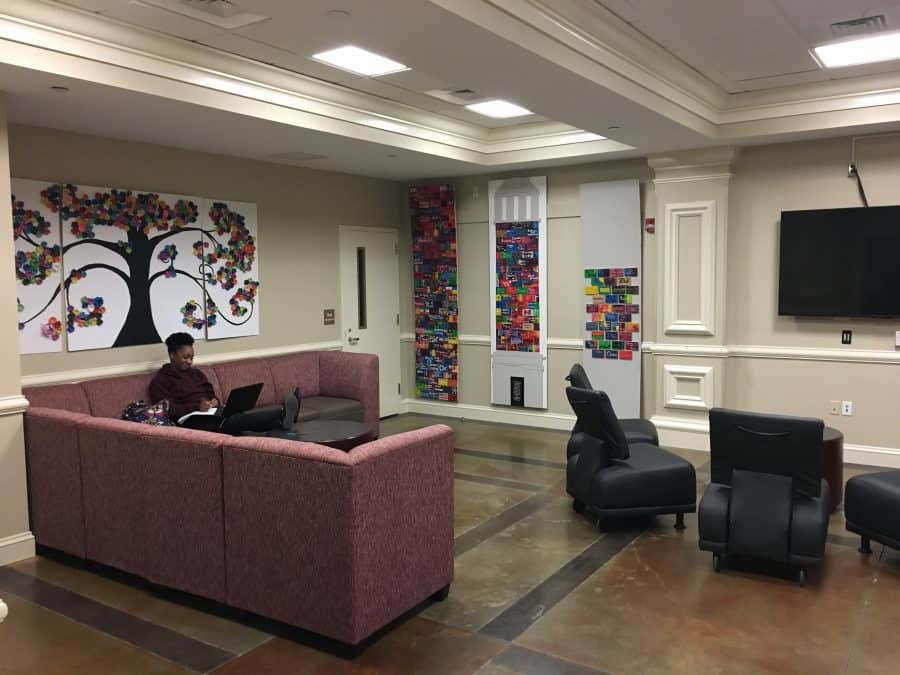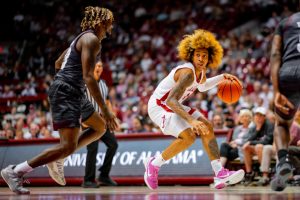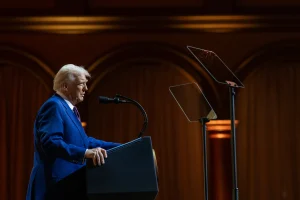Opinion | Underfunding minority students keeps UA in the past
October 15, 2020
Students of color are everywhere on this campus. We publish student-led magazines. We establish community centers to encourage and support the underrepresented among us. We run the Student Government Association. But the University isn’t all that interested in funding us.
The Intercultural Diversity Center (IDC) officially opened to the UA population on Feb. 1, 2016. The opening came after months of lobbying from students in the We Are Done movement, which was created to hold the University accountable for its lack of a diverse and inclusive campus. But establishing the center was all the University was interested in doing.
UA alumna Teryn Shipman, who was integral in establishing the IDC, said that the University never established a budget specifically for the center. Instead, Shipman spent a great deal of her own time and money creating events for the center. As students who were also once involved with the IDC, we find it comical that a University that raves about all its resources and opportunities especially in regards to diversity and inclusion has imposed marginalized students with a list of campus problems longer than their arm.
The IDC was created as a space for students, faculty and staff of all cultures and identities to unite in order to make everyone on campus feel welcome. It’s an admirable goal, but without resources, it becomes one that is impossible to achieve.
As of fall 2019, the University had around 7,500 minority students on campus, according to a report by the Office of Institutional Research and Assessment, which doesn’t specify whether the students are on the undergraduate or graduate level and doesn’t include minority staff and faculty. With a campus of over 25,000 white students, it’s important to provide sufficient space for underrepresented students to create a sense of community and embrace their respective cultures and identities.
Athletes get exclusive dining halls. Greeks have their mansions. Students of color get a few couches and computers on the ground floor of Riverside Annex.
The IDC is meant to bring awareness to differing traditions and customs such as Holi, Juneteenth, Carnaval and Seollal. The University is an institution created to further higher education, which should include cultural education. These holidays should be celebrated just as much as Memorial Day or Presidents Day because they show what real diversity looks like. A solid, sufficient budget for the IDC would make that possible.
One would think that UA President Stuart Bell would understand the importance of a fully-funded cultural center, since his last workplace, Louisiana State University (LSU), has more than one center for minority students. This fellow Southeastern Conference school has an International Cultural Center with a full staff and regularly scheduled programs, as well as the Clarence L. Barney Jr. African American Cultural Center, a space that is not only fully equipped with full-time staff, graduate assistants and student workers but provides students with the opportunity to reserve spaces and attend workshops. LSU isn’t the only SEC school taking concrete steps to support its minority students. The University of Tennessee’s 13,700-square-foot Frieson Black Cultural Center is outfitted with a computer lab and multiple community spaces, and it’s located in the heart of campus. The University of Mississippi and Texas A&M, which have similar student demographics, also have dedicated spaces for underrepresented students.
UA Vice President and Associate Provost for Diversity, G. Christine Taylor, also hails from a university with a well-funded Black student center. Taylor’s former employer, Purdue University, has its own Black Cultural Center. The center boasts a computer lab, a multipurpose room and a formal lounge and library that houses more than 6,000 books.
But here at the Capstone we should be so lucky as to have one graduate assistant and full time staff member appointed to the IDC. We should have been elated when the center was moved to a central location after fighting for years to have our concerns about the space heard. We shouldn’t be concerned that the center that was fought so hard for by students doesn’t even have a formal website but rather a page on the Office of Diversity, Equity and Inclusion website.
Shipman mentioned that during her time with the center she had never even seen Taylor visit the IDC. The most heartbreaking part of it all is that UA is the third-largest SEC school and one of the largest in the nation, but it does not have a properly established center like its neighboring schools with much smaller student populations.
After the departure of former Dean of Students Jamie Riley last fall, students created a list of demands to increase diversity and inclusion on campus. There was only one demand met, which was the relocation of the center to a central location. At the same time, the pay for IDC student workers, who do work equivalent to that of a paid staff member, was reduced to $7.25 – wages that Shipman said had to be fought for from the beginning. She also mentioned that student workers have had a hard time even getting in contact with Taylor to express their grievances and create change. This is probably due to the fact that The Office of Diversity, Equity and Inclusion, under which the IDC is housed, is understaffed itself.
“It is intriguing that the University can never seem to find the funding to support a center that was created to embody true diversity, but can find money for other spaces on campus,” Shipman said.
Those other spaces, like student government or athletics, may occasionally see dips in their budgets. But at least they have budgets. Black bodies seem to only be worth funding when there’s a national championship on the line. Underrepresented students excel at so much more on this campus than athletics, but this so-called capstone of higher education would rather fund Black bodies than Black minds.
Shipman makes a powerful assertion that the University aims to place Black students where they are seen but not necessarily heard. They ought to coexist.
The University needs to take responsibility and create the change students are asking for. It’s hard to create change when the UA administration is content with its own complacency. But in a time when racial tensions are high, confederate monuments are being taken down and many are recognizing the need for restorative justice, it’s time to have real conversations and cut the sugar coating.
President Bell and Dr. Taylor, you are failing your minority students. You are ignoring the demands of your minority students. You are being called out, as you have plenty of times before, in the hopes that it will be the last time. If you love this university, you’ll fight to keep its students united and included. We cannot be Tide Together until we’re all on equal footing.
Update – Friday, Oct. 16:
As of Thursday, Oct. 15 a tab dedicated to the Intercultural Diversity Center on the Office of Diversity, Equity and Inclusion’s website was updated to include recent images of the center, and a full staff list was named. The images showed minimal signage to indicate the significance of the center and resembled a common study space rather than a comforting place for fellowship and for minority students to engage.





















